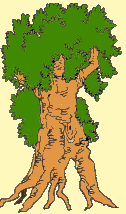Fagara xanthoxyloïdes
Fagara xanthoxyloids
African names - Wolof: Guene GUI deg, - Bambara: houo, WO, Gozo ngua - Peuhl: Barkeley, Bulabarkele - Hausa: Fasahuari - Toucouleur: Dori -Goun and Fon: Hètin
use
The root of fagara is widely used as a tooth rub. It has a hot tang that is much appreciated and used to soothe dental pain and infections. The bark and roots are a good cure for sickle cell anemia and infections caused by staphylococci and streptococci. This plant provides good relief from anemia and rheumatism.
PLANT DESCRIPTION
Small tree 6 to 7 meters high, with many hooked thorns on the branches. The leaves are compound imparipinnate. The flowers are fragrant white. Fagara should not be confused with May tenu senegalensis which presents a similar aspect and also bears thorns but where the leaves are simple; these two plants are designated by very similar vernacular names.
Direction of use
--Antidrepanocytic
Macerate the plant for 24 hours (100 grams of roots in 100 ml of water) and drink three times per day 5 ml of the solution or take one gram three times a day of powdered roots. You can also reduce the bark to powder and use the powder as a food supplement.
--Anemia and ovulation problems.
Take the powder of the roots + bark of fagara + roots of securidaca.
Note: The center has the powder for direct use.
Add a comment






















